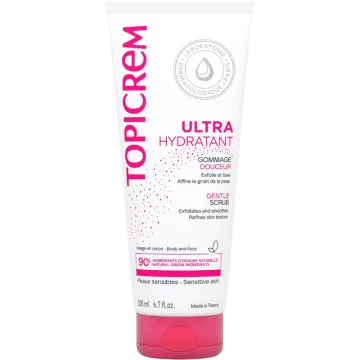
What is dead skin and why do we need to remove it?
Dead skin refers to epidermal cells that have completed their life cycle and accumulate on the skin's surface. This accumulation can lead to a dull appearance, clogged pores and imperfections. Eliminating these cells is crucial to promoting cell renewal, improving skin radiance and optimizing the effectiveness of skincare products.
What are the best techniques for removing dead skin cells?
How can I integrate exfoliation into my skin care routine?
Integrating exfoliation into your routine should be done with care to avoid over-exfoliation, which can damage the skin barrier. Here are a few tips:
What are the benefits of regularly removing dead skin cells?
Regular removal of dead skin has several benefits:
What are the signs that I need to exfoliate my skin?
Signs of needing exfoliation: Dull skin, rough patches, visible accumulation of dead cells, or dilated, clogged pores are clear indicators. If you also notice that your make-up doesn't apply evenly, or that your skincare products seem less effective, it's probably time to incorporate regular exfoliation into your skincare routine.
Is exfoliation suitable for all skin types?
Adapting to skin types: All skin types can benefit from exfoliation, but the key is to choose the right method and frequency. Sensitive skin types should prefer gentle exfoliants and limit exfoliation to once a week. Oily and acne-prone skin, on the other hand, may require stronger, more frequent exfoliants to prevent breakouts and reduce shine.
Are there natural alternatives to exfoliation?
Natural alternatives: For a gentler, more natural approach, consider ingredients such as sugar, salt, baking soda, or oatmeal. These ingredients can be blended with base oils like coconut or almond oil to create effective scrubs that remove dead skin while nourishing the skin.
What precautions should I take after exfoliating my skin?
Post-exfoliation care: After exfoliation, it's essential to rehydrate the skin. Use a rich moisturizing cream to restore lipids and strengthen the skin barrier. It's also advisable to avoid direct sun exposure immediately after exfoliation, and to use sunscreen to protect newly UV-exposed skin.
How do I know if I'm over-exfoliating my skin?
Signs of over-exfoliation: Red, irritated, peeling or more sensitive skin may indicate over-exfoliation. If you notice these symptoms, it's advisable to reduce the frequency of exfoliation and opt for gentler methods. Respecting your skin's natural balance is crucial to avoid damaging its protective barrier.